
Lycia’s History - A Struggle For Freedom
The history of Lycia is a story of fierce struggles against those who sought to invade and dominate it, as it was a very desirable region. It appears that Greek efforts to colonize Lycia during the first millennium B.C. were largely unsuccessful even though there were several Athenian expeditions.
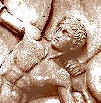 |
The first recorded instance of Lycian resistance fighting occurred around 540 BC when the Persians under the commander Harpagos overran all Asia Minor during the rule of Cyrus II (The Great). The Persians attacked the Lycian capital city of Xanthos and the Xanthosians put up a heroic fight. In the end however, they chose mass suicide over surrender. The men of Xanthos gathered their wives, children and possessions in the acropolis and set fire to all before rushing out fighting to die to the last man. Herodotus of Halicarnassos reports: |
"The Persian Army entered the plain of Xanthos under the command of Harpagos, and did battle with the Xanthians. The Xanthians fought with small numbers against the superior Persians forces, with legendary bravery. They resisted the endless Persian forces with great courage, but were finally beaten, their womenfolk, children, slaves and treasures into the fortress. This was then set on fire from, below and around the walls , until destroyed by conflagration. Then the warriors of Xanthos made their final attack on the Persians, their voices raised in calls of war, until every last man from Xanthos was killed."
This disaster was confirmed during excavations by a thick layer of ash covering the site.
Xanthos was later repopulated by about 80 families outside the city at the time of the mass suicide as well as other Lycian immigrants to the city. Persian rule of Lycia actually proved to be quite mild, requiring only tribute, and the country was left to be ruled by its own dynasts. The state of calm that came over Lycia fostered economic growth and the strength of the region. The abundant coinage of Lycia in the 5th and 4th centuries BC testifies to the great prosperity of Lycia at that time. It was during this period that the first monumental rock-cut tombs were carved and the Lycian alphabet came into wide-spread use.
Lycia remained nominally under Persian rule in the late 5th century, but in practice was almost independent, as long as they kept paying their tribute to Persia. In 480 BC the Lycians contributed fifty ships to the Persian King Xerxes' invasion of Greece, though they later sided with Athens.
| Around 470 BC the Athenian general Cimon was campaigning against the Persians in Lycia and from 454 BC the Lycians joined the Delian League, contributing ships and later, tribute. Not that they had much of a choice. Plutarch tells us that Phaselis refused to join the League or admit Cimon's fleet, so in retaliation Cimon "devastated their land". Around 468 BC Cimon, with a fleet of 300 ships, arrived at the southern coast of Asia Minor and drove the Persians out of Lycia and neighbouring Caria. | 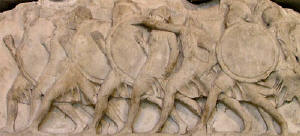 |
Following the ousting of the Persians, as Athens and Sparta fought the Peloponnesian wars, the majority of Lycian cities defaulted from the Delian League, with the exception of Telmessos and Phaselis. In 429 BC, Athens sent a expedition against Lycia to try to force it to rejoin the league. This failed when Lycia's leader Gergis of Xanthos defeated General Melasander.
The Lycians once again fell under Persian domination and by 412 Lycia is documented as fighting on the winning side of Persia. The Persian Satraps (province governors/local military rulers) were re-installed, but allowed local dynasts the freedom to rule. Gergis was suceeded by his son, Arbinnus of Tlos, who ruled Telmessos, Xanthos, Pinara and erected the temples of Leto and Apollo at Letoon. There are a few theories about exactly what happened next in history, but it seems that the dynast Pericles of Limyra's ambition was apparently to gain eastern independence from the rulers of Xanthos. He may have defeated the dynasty at Xanthos and come to have controlled all of Lycia and neighboring regions to the north and east. The Persians would not have allowed this shift of power and so, along with some other Anatolian regions and satraps, Pericles led Lycia into the Satraps Revolt in 362 BC in a bid to win independence. When the revolt was crushed, Lycia was placed under the control of a Persian satrap of Carian descent, Mausolus (from whom we get the word Mausoleum), and became an occupied territory with garrisons put in strategic places. From this time on, Carian rulers began suppressing the indigenous culture of Lycia and imposing Helleno-Carian culture. The Letoon Trilingual text, discovered at Letoon in 1973 (now in the Fethiye Museum) discusses the introduction of two Carian cults in the heart of Lycia and gives clear evidence of Carian rule.
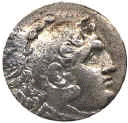 Alexander the Great |
By the time Alexander the GreatBy the time Alexander the Great arrived in Lycia in 333/4 BC, the Lycians must have been fed up with Carian rule because we know that when Alexander arrived, he did not receive a hostile reception from the Lycians - it seems that he may have possibly been welcomed as a deliverer. Xanthos opened its gates voluntarily, whereas before it had resisted foreign invasions, and all other Lycian cities quietly submitted to Alexander - save Termessos (sometimes reckoned as part of Lycia, sometimes as part of Pisidia). Alexander never did take Termessos - its fierce people did not want his rule and he took one look at the city perched high on the mountain and then went around it. It was of no use to him anyhow. The Roman historian Anabasis Alexandri in his Campaigns of Alexander (the most important source on Alexander) tells us that Lycia added 10 triremes to Alexander's gathered fleet which trounced Darius' Tyrian allies at the siege of Tyre. Lycian cavalry units were also incorporated into Alexander's army, along with some from Lydia, Syria and other Asian satraps. |
Following the death of Alexander, his generals argued over his conquests and Lycia, along with most of Asia minor, was taken over by General Antignus. But in 309 BC, another of Alexander's generals, Ptolemy, who declared himself king of Egypt, took over Lycia. It was during this Ptolemaic rule which lasted over a hundred years, that Lycia began to lose a bit of its native character. Greek was adopted by Lycia as the nation’s language and the Greek influence was also felt in art and culture. For example, the popularization of sarcophagus-tombs to replace the earlier rock-cut tombs. The rule of the Lycian dynasts ended with Pericles, as cities adopted Greek constitutions. It was also during this time that the democratic Lycian Union was formed. It eventually consisted of 36 cities.
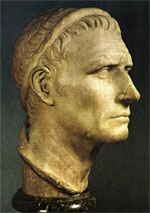 Antiochus III |
The Ptolemies heavily taxed Lycia and forced Lycians to serve in the Egyptian army. Lycia was then relieved by Antiochus III, king of the Seleucids (based in Syria) in 197 BC. Phaselis, Limyra, Andriace, Patara and Xanthos are specifically mentioned as having been captured by him. Shortly afterwards, in 192 BC, the Syrian War began when Antiochus refused the demands of Rome to halt his westward expansion and to withdraw from Greek cities in Asia Minor. Rome had previously issued a degree giving "freedom" to some of these cities, freedom under the sphere of Rome, a sphere which Antiochus now claimed as his own. The two superpowers went head-to-head. |
The Roman historian Livy tells us that Rhodes became an ally with Rome and suggested that they each detach part of a fleet to occupy Patara as the port was defensible, had good shelter for ships and was at a strategic place to intercept Antiochus's fleet before it headed north. The Romans and Rhodians were only able to detach eleven ships under the command of C. Livius. The operation was a total disaster: when the ships reached Patara, they lost all hope of surprise or success when a heavy wind prevented them from reaching the city. With darkness falling, they sought shelter in the port of nearby Phoenicus - modern-day Kalkan. (note: today ships still find safe harbour in Kalkan when the seas are rough). However, they soon found the hills above them crowned with Lycian townspeople from Patara and the kings's garrison. A ferocious battle raged as "more and more (Lycians) came out of the city in a constant stream and at last the whole of the able-bodied population were pouring out". These attackers could not be driven back within Patara's walls until the very oarsmen from the ships galleys engaged in battle. The Romans and Rhodians returned to their ships with considerable losses and abandoned the thought of any further attempt on Patara.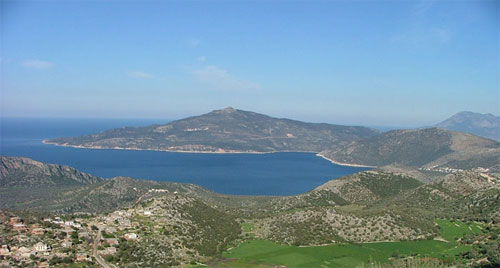
In 190 BC Antiochus was defeated by the Romans at the battle of Magnesia. The Roman historian Livy then tells us that Q. Fabius Labeo, who was in charge of the Roman fleet, went to Patara and had all the the king's ships there (50 of them) broken or burnt up.
Lycia had contributed an army to Antiochus III which fought with him at the battle of Magnesia. Rome punished Lycia by handing it over to Rhodes (with the exception of Telmessos). Dreadfully misunderstanding the situation, the Lycians first sent an embassy to Rhodes desiring an alliance but were soon informed of their true situation. The Lycians were extremely resentful of their harsh treatment in the hands of Rhodes and spent the next two decades fiercely fighting the Rhodesians and petitioning the Roman Senate. Finally, weary of the trouble and no longer allies with Rhodes, the Roman Senate in 167 BC removed control from Rhodes and granted semi-self rule to Lycia. The one permanent result of Rhodian rule in Lycia was that Phaselis, a Rhodian colony, was from then on included in Lycia.
Some time in the second century BC, probably near the beginning, two men, Lysanias and Eudemus, seized control of Xanthos and carried out executions in their attempt to set up tyranny. A campaign of the Lycian League's forces supressed them and restored order. However, shortly after this, Eudemus made a second attempt at Tlos and once again the League's forces were called out. From this it is evident that the the Lycian Union was strong and ready to act in defense of freedom.
 Mithridates VI |
The formation of the Roman province of Asia in 167 BC left Lycia untouched and the Lycian League came into prominence. In 88 BC the Pontic king Mithridates VI attacked and overran western Asia Minor and most places welcomed him as a liberator due to unsatisfactory Roman administration. Lycia, however, was among the few who resisted, proving its loyalty and gratitude to Rome (for releasing Lycia from Rhodian rule). Mithridates sent his officers to subdue Lycia. They laid seige to Patara for a time, and committed the offence of cutting timber at a sacred grove at Letoon, Lycia's sacred religious centre, to construct engines of war. However, Lycia was was not effectively occupied and in 84 BC the king was defeated by the Romans. Rome reaffirmed Lycia's independence and showed its gratitude of Lycia's loyalty by enlarging the Lycian territory with the addition of the three cities of Bubon, Balbura and Oenoanda. Lycia's friendship with Rome was soon furthered. After the victory of emperor Gaius Julius Caesar over his former general Pompey in Pharsalus, he and his forces travelled through Asia Minor en route to Egypt. |
Along the way Caesar receieved delegations from cities and communities who were anxious to be on good terms with him. Evidently the Lycians were among these people and were rewarded with a treaty of friendship and reciprocal miliary alliance. Such treaties were the foundation of the Roman Empire and one of the reasons for its military success and stability over the centuries. However, Lycian did not come under direct Roman rule at this time, and did not do so until the time of the Emperor Claudius.
The peacefulness was not to last. Lycia soon fell victim to the ensuing power struggle in Rome and its loyalty was tested. In 42 BC Brutus passed through Asia Minor to collect money and soldiers. Lycia refused to make contributions to Brutus' resources and so Brutus attacked Xanthos, where the League's soldiers were gathered. The Xanthians battled fiercely, but once again, as 500 years before, the Xanthosians chose mass suicide over domination. Myra was also affected by Brutus when he sent his lieutenant Lentulus Spinther to collect money; Spinther had to force an entry to the harbour at Andriace by breaking the chain which barred their way. The Myrans then submitted and complied with his demands. Patara also capitulated and the rest of Lycia followed. (Read Plutarch's narrative of Brutus's capture of Lycia, not necessarily completely true).
Roman armies later took control of Lycia by beating Brutus and repaired Xanthos. Antoninius, who had defeated Brutus, took over Rome's eastern territories and allowed the Lycians their freedom. Thus, Lycia remained the only part of Asia Minor not to be incorporated into Rome's sphere of power.
Lycia again prospered, under the reign of Augustus which began in 27 BC. when he appointed Marcus Agrippa to administer the eastern provinces, the beginning of a period of benevolent and peaceful rule.
Lycian cities cultivated good relations with Rome, like many cities within Rome's sphere of influence that were not actually part of Roman provinces. An inscription from Oenoanda honors Piso the Pontifex when he was the governor of neigboring Galatia-Pamphylia in cira 12 BC and Myra erected a statue of their Roman patron in Ephesus, most likely the proconsul of Asia circa 28 AD.
| In 43 AD, with the orders of Emperor Claudius, all of Lycia was annexed to Roman Pamphylia (Lycia's eastern neighbour). The historian Cassius Dio tells us that this was done because Lycia had "revolted and slain some Romans." Unfortunately, he does not tell us anything more about the revolt. However, Claudius' real motivation was probably the desire for full control of supplies coming from Lycia. By this time Lycia was an important source of timber from its vast pine and cedar of lebanon forests, and wheat. | 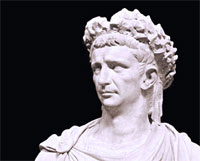 Emperor Claudius |
Upon annexation, Claudius immediately commissioned a survey of the roads of Lycia. Control of this road system was vital to Rome, both to ensure easy movement of their troops around the frontier provinces as well as delivery of crops to major ports. A stone pillar recording the survey of Lycia was discovered in Patara and at Tlos there is a monument dedicated by the city to an army commander who was also Lycia's commissioner of roads and insepector of the grain supply. What may be a Roman way-station consisting of a small fort or watchtower, other buildings and a small bath has been found near an ancient road between Arycanda and Limyra, about a one-day's walk from both cities. The area may have been a place of settlement, provinding relief for the imperal post (cursus publicus) and weary travellers.
After being incorporated into a province with Pamphylia, Lycia was administered by a governer whom the emperor appointed, Quintus Veranius. However, the Lycian League still functioned under a special agreement with the Roman Senate and was politically distinct from Pamphylia. Strabo tells us that the League decided on domestic issues and security while questions of war, peace and alliance (except in special cases) now rested in the hand of Rome.
Corruption in the eastern provinces does seem to have been somewhat of a problem around this time. According to the Roman historian Cornelius Tacitus in his work 'The Annals', in 58 AD the former governors of the provinces of Asia, Cilicia and Lycia all had legal action brought upon them by the provinces. (The former governor of Asia was also charged with the murder of his pro-consul) Eprius Marcellus, Lycian's governor from 53 to 56 AD, was prosecuted for for misappropriation of funds. Lycia sought damages, but Marcellus was acquitted. In fact, he had such influence that some of his accusers were punished with exile, “as if they had conspired the ruin of an innocent man.”
Under the emperor Nero Lycia was briefly freed from Rome in 67 AD, but was shortly thereafter re-annexed to Pamphylia under Vespasian in 70 AD following the civil war of 69 AD. This arrangement continued happily until the composite province was split up by Diocletian in the early fourth century and Lycia became a separate province.
| During the first and second centuries AD, the emperors Germanicus, Vespasian, Traianus and Hadrian visited Lycia for various reasons. The emperor Germanicus and his wife Agrippina paid Myra a visit in 18 AD and were honoured with statues of themselves erected in Andriace (Myra's port). Vespasian (69-79 AD) treated Patara with respect and made monetary contributions to public works in the region. A large bath was built there during his time and dedicated to him (this is disputed - it may have been built during Nero's reign). Hadrian (known as one of the Five Good Emperors) visited Lycia with his wife Sabina in 131 AD. | 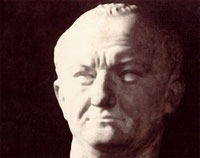 Emperor Vespasian |
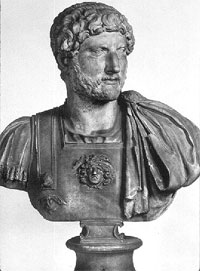 |
He was popular in most of his provinces and during his visits was usually greeted enthusiastically, in part thanks to the gifts and public works Emperor Hadrianprojects he offered. He believed in strengthening the Empire from within through improved infrastructure and commissioned new structures, projects and settlements on his many travels. Hadrian was warmly received in Lycia and he built huge graneries at Patara and Andriace and at Phaselis numerous buildings and statues were erected in his honour. A emperor worship cult in his name was also formed at Letoon. Zosimus, the Byzantine historian of the 5th and 6th century AD, tells the story of the death of a robber chieftan named Lydius the Isaurian (may be the same person as Palfuerius in the History Augusta) who was terrorizing Lycia and Pamphylia with his fellow brigands. The Isaurians were a people from the mountains on the borders of Pisidia and Cilicia, north of the Taurus range, a wild region inhabited by marauding bands notorious for causing havoc among neighboring regions. The emperor Probus personally went to Lycia in 279 AD to put the terror to an end and Lydius was killed in the fighting. Probus then constructed a fortress and settled large groups of veterans in the area, giving them land in exchange for the promise that their sons would also serve in the legions when they were old enough. |
Lycia naturally underwent a process of romanization of its culture, art and daily life in its Roman period. Lycian aristocrats began to adopt Roman names and the emperor cult spread rapidly.
| As was common in Anatolia, there was also a demand for wild animal fights and gladitorial games. We know from L. Robert's 'Les Gladiateurs Dan L'orient Grec' that in Pinara there was a man who was honored for organizing many spectacles in Lycian cites: bullfights (tauromaxi/a), hunts after animals by trained hunters (kunhgesi/a), shows of animals before they were slaughtered (prokunhgi/a), ritual sacrifices of bulls (tauroboli/a), and qhriomaxi/a (the collective name for all sorts of fights: those between animal and human being (trained or not; armed or not) and those between animal and animal). |  Amphitheatre at Letoon |
Someone organized prokunhgi/a at Xanthos, and tauromaxi/a and qhriomaxi/a were held at Letoon; in Telmessos: monomaxi/a and qhriomaxi/a; in Oenoanda: kunhgesi/a, qhriomaxi/a and monomaxi/a (gladitorial games). Most likely these types of shows were held in other cities as well.
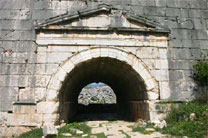 Amphitheatre at Letoon |
The presentation of these games was not cheap. An idea of the costs can be made from an 115 AD inscription from Oenoanda; a certain Licinius Longus gave 110,000 denarii to the Lycian League, 40,000 to Myra, 50,000 to Tlos and to his home town of Oenoanda he provided wild beast hunts and gladiatorial combats (and surely the cost of his generosity to his native city would have surpassed that of his gifts to Myra or Tlos). |
Lycia prospered under imperial rule. Most of the sumptuous monuments and public works in Lycian cities dates from the Roman period, specifically from the the 2nd century A.D. As trade expanded people became wealthier and many rich Lycians gave generously to their country. For example, Opramoas of Rhodiapolis personally financed almost 60 major monuments in all Lycian cities including the theatres of Xanthos, Tlos, and Limyra.
Lycia remained prosperous into the early Byzantine period, the basis of which was still timber, olives and wool, unlike most of the Mediterranean which grew prosperous from agriculture. Lycia was home to a large cedar of Lebanon forest; this wood was one of the most demanded materials in antiquity - it was used for construction, ship building and coffin making.
The Decline of Lycia
Following two very large earthquakes in 141 AD and 240 AD some cities were unable to recover and Lycia began to decline somewhat. However, a distinct Lycian nationhood seems to have survived well after the arrival of Christianity in the 3rd century AD.
| Arch of Modestus at Patara, this was part of the aquaduct systemty brought important social and cultural changes to Lycia. It was not an easy transition however. The first Christians in Lycia were detested, among other reasons, not for their religion, but for their refusal to make sarcrifices to the imperial gods, a treasonous offense. The making of such sarcrifices was considered a civic duty for the good of the empire, believed to placate the gods. When the Chrisitians refused, they became a threat to the well-being of their communities. During the official 'Great Persecution' of the early 4th century (persecution began earlier than this), cities throughout the east were encouraged to petition the emeperor for special permission (and rewards) for expelling Chrisitians. An inscription at Arycanda records that such a petition was made by the province of Lycia and Pamphylia. Ultimately, however, the persecution failed and in 312 AD the emperor Constantine made Christianity legal with the Edict of Milan. Several martyrs in Lycia are recorded in history and various micacles are said to have occurred. The most important figure of Lycia's Christian history was St. Nicholas (later known as Santa Claus), Bishop of the Lycian city of Myra. |
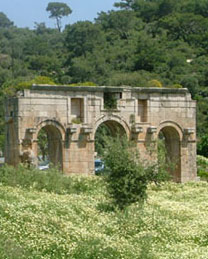 The spread of Christiani |
Many ancient Lycian cities became Byzantine settlements of importance. Twenty-five of them became seats of bishoprics. What is interesting is that while carefully constructed monumental churches were built in Lycia's mountainous areas in settlements so small that the names are unknown, buildings on the coast - even large churches - are known for their careless construction, often of rubble masonry. Church of St. Nicholas, Myra (Demre)
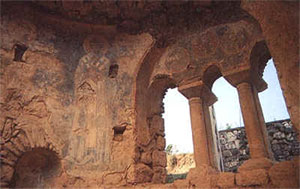 |
Another natural disaster which no doubt helped along the decline of Lycia was the bubonic plague. It wreaked havoc in Anatolia for 200 years, from 542 AD to the last outbreak of this pandemic in 745 AD. This was the same plague that reduced the population of Europe by about 50 percent by 600 AD and has been seen as the cause of the beginning of the Dark Ages in Europe. Through death, depopulation and the consequent abandonment of agricultural land and cities, the nature of Byzantine society and patterns of settlement and land use that had been established over centuries in Anatolia were changed throughout Anatolia. This impacted the economy, currency and military also. This 200 years of plague in Anatolia was a formative event and distinguishes classical and early Byzantine Anatolia from late Byzantine and Seljuk Anatolia. |
Flourishing Byzantine Cilician coastal ports and cities were all abandoned during this period and there is no reason to suppose that Lycia was immune from the plague's depopulation. Indeed, Lycia's Myra was struck by the plague in 542-3 AD, with one-third of the population dying, most likely brought by plague carriers travelling along the coast of Anatolia by coastal shipping trade and by the return of Christian pilgrims from Palestine and Byzantine shipping to Egypt (the plague spread from Ethiopia to the Sudan to Egypt 541 AD). It was called the plague of Justinian because the Byzantine Emperor Justinian himself survived an encounter with it. John of Ephesus described the plague as, "The wine press of the Lord," and noted that corn was left unharvested in the fields. Evagrius, wrote in 593, "I believe no part of the human race to have been uninflicted by the disease, for it occurred in some cities to such an extent that they were rendered empty of almost all their inhabitants." Evagrius lost almost all the members of his family in the first four waves of the pandemic to sweep across Anatolia from 542 to 593.
Piracy and looting had started in the Late Roman Age and by the mid-7th century the Arabs had built a fleet that challenged Byzantine naval supremacy in the eastern Mediterranean. Their raids (7th-9th centuries) for loot and slaves, as well as piracy from the seas, eventually pretty much finished off Lycia, at least near the coast, as populations moved inland, cut off from old trade routes.
Some cities, like Patara, still held on but were eventually reduced to mere villages. The Arab raids forced the town to retreat to a small area on the edge of the harbor and to build walls to create a protected inner port; by this time the town was very much shrunken. Written records of the 9th century show that while Patara was still an important place, it was a village. In the 10th century is became a naval base of the Byzantine Empire. Its port is reported to have been used through at least the 15th century and the Sultan Cem signed a treaty there in 1478/9. Church and chapel excavations point towards even greater shrinkage of the village and an increase in poverty. Eventually, with too little manpower to keep the sand out of the harbor, it silted up, became plagued with mosquitoes and malaria and that finished it off.
Like the rest of the ancient world, as Lycia declined, pieces of buildings were dismantled for reuse in the construction of other buildings, especially lead and iron spoila. For example, the wall surrounding the "Middle Ages City" at Patara is made of reused blocks. In this example, column-drums and pieces of sarcophagi are used in a wall on Tlos' acropolis. Some buildings were reworked, such as Patara's Harbor Basilica which is built upon the remains of a temple, using the temple's existing doors and columns. This occurred throughout the ancient world; the early Christians often built basilicas and churches over temples to erradicate them. However, in other places, the building over adequate pagan temples was shunned for unknown reasons. At Letoon, for example, there are three temples that would have been adequate for the construction of a basilica, but a 6th century basilica was instead built directly to the south of the temples. It is not known if this occurred due to distaste of the surviving power of pagan belief or if the temples were not oriented in the proper direction.
Other buildings (and perhaps statues) were used to make lime. There is a lime kiln at Patara next to the Harbor Bath that was used to turn the bath's marble tiles into lime. It is near a furnace that was used used to melt down the braces that kept the marble tiles affixed to the walls of the bath. Another lime kiln is found on Patara's Tepecik Acropolis. Some very interesting things probably vanished into these kilns.
Some pagan religious buildings were destroyed during Byzantine times by zealous religious leaders in their effort to stamp out paganism (which points to the surviving power of paganism during that time). St. Nicholas, the 4th century AD bishop of Myra and the future Santa Claus, had the renowned temple of Artemis in Myra - said to be the most splendid building in Lycia - completely destroyed, as well as many other temples in the area. After his death, the church of St. Nicholas became a popular pilgrimage center and attracting pilgrims from home and abroad in all periods, even after his remains of were stolen in 1087 AD and taken to Italy.
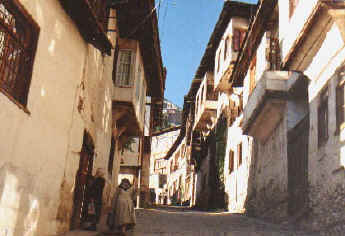 Ottoman buildings in Elmalı |
The country lay almost uninhabited for several hundreds of years until the Turks, led by the lords of the Teke Dynasty, settled the area in the 13th century. Many fine Turkish monuments of these people can be seen today in highland towns such as Elmalı. The area was known as the "Uç" (frontier) - wilderness - and the Turks too mainly kept to the high plateau and left the coast to pirates where they had semi-permanent settlements (in fact, the coast wasn't cleaned up until the presence of the British Navy in the 18th and 19th centuries cleared the area). Lawlessness and bandits were a problem throughout the land. At the turn of the 19th century the Ottoman government began repopulating the coast with Greeks from the Aegean islands in order to balance the power of the local feudal lords. Many coastal towns like Kalkan (then called Kalamaki), the neighboring town of Kaş (Andifli) and Livissi (now deserted) came into existence at this time since the Aegean Greeks preferred to settle by the coast. However, Anatolian Greeks were required to leave Turkey and settle in Greece after the war of 1919-1922 with the exchange of populations.
| LYCIAN SITES Around twenty major Lycian sites remain today. Here are some examples that can be visited either independently or on a tour, making for a very nice day out in gorgeous nature. |
|
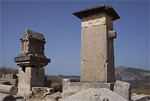 |
Xanthos UNESCO World Heritage Site (combined with Letoon). One of the six principal cities of Lycia. The capital city of Lycia for much of its history. |
 |
Letoon The sacred cult centre of Lycia. Three side-by-side temples to Leto, Artemis and Apollo, the national deities. |
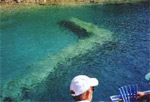 |
Kekova-Simena An area with beautiful scenery and underwater ruins, includes info about Tiemiussa. |
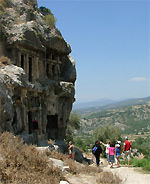 |
Tlos Best-known for its fortress-topped acropolis, with its rock-cut tomb-covered sides and its 360 degree panoramic views. I especially like the Roman era baths. One of the six principal cities of Lycia. |
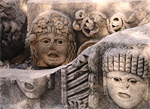 |
Myra One of the six principal cities of Lycia. Known for its many rock-cut tombs and the largest amphitheatre in Lycia (in a good state). Nearby is the Church of St. Nicholas, who was once the bishop of Myra and grew to international fame. |
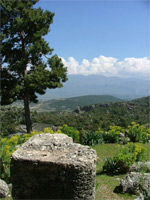 |
Pinara One of the six principal cities of Lycia. Set in an untouched, gorgeous mountain setting of fragrant pines, ancient olive trees, wildflowers, thyme-scented breezes with a stunning view over the Xanthos valley. |
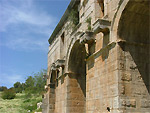 |
Patara Another of the six principal cities of Lycia, the major naval and trading port of Lycia. An extensive city with many ancient structures, including what may be the world's oldest lighthouse. Located right next to Patara Beach, voted one of the best beaches in the world. |
Some less visited, though not less interesting, sites: |
|
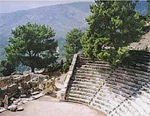 |
Arycanda One of Lycia's best-kept secrets, a large site known for having had the most pleasure and entertainment-loving citizens. Built upon five large terraces ascending a mountain slope, overlooking a beautiful valley. |
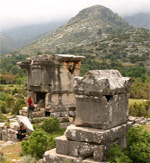 |
Sidyma A site that is interesting not only for its ruins, but for the lovely village, with very friendly villagers, that has been built among the ruins. It has a temple-type monumental tomb with an ornately carved ceiling. |
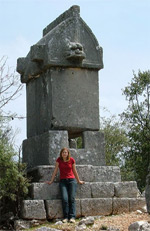 |
Cyaneae Famous for its many sarcophagi, the most of any Lycian site (there may be over 300 of them). |
| reference : http://www.lycianturkey.com | |

